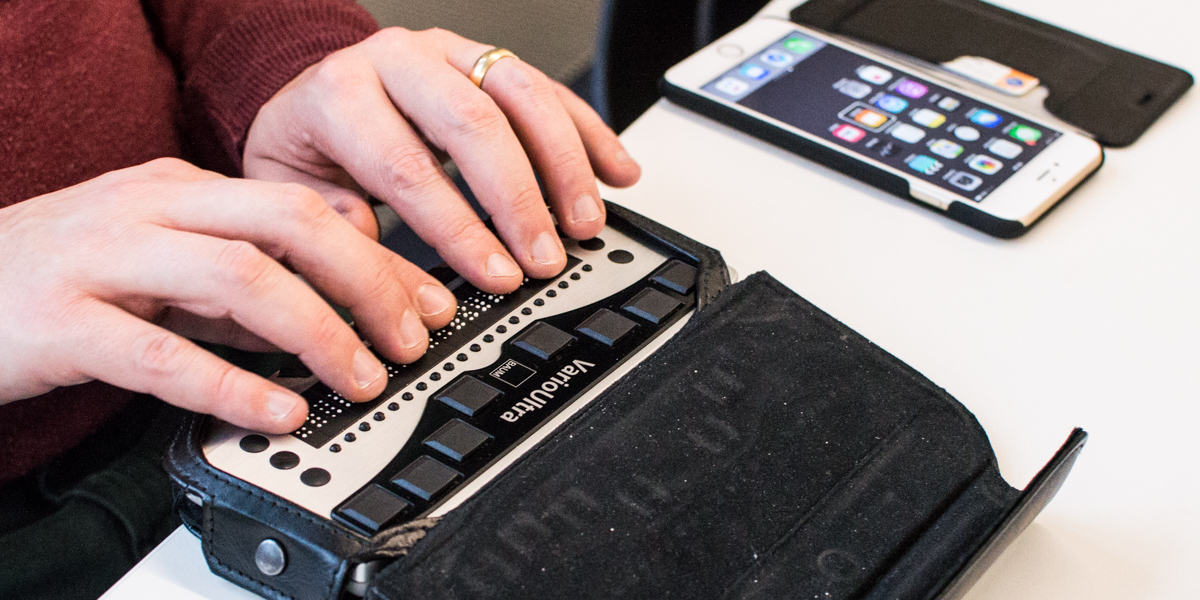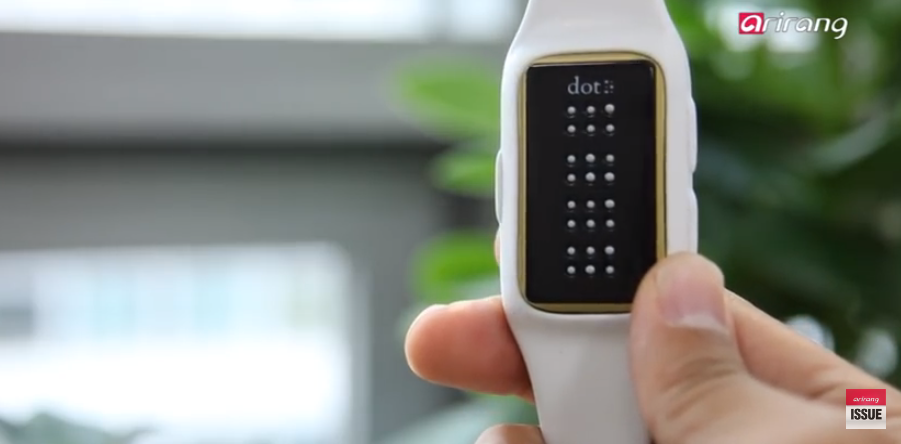Voice-Activated Assistive Devices: Supporting the Visually Impaired
Voice-Activated Assistive Devices: Supporting the Visually Impaired
Blog Article
Enhancing Lives With Advanced Assistive Instruments for the Blind
The combination of advanced assistive tools for the blind is changing how individuals experience their surroundings and connect with their communities. What does this evolution suggest for the future of assistive technology and its duty in empowering individuals?
Review of Assistive Devices
Assistive devices for the blind encompass a diverse range of modern technologies and tools developed to enhance freedom and enhance the high quality of life for individuals with visual disabilities. These gadgets satisfy various needs, from navigating and mobility to interaction and day-to-day job management.
Among the main groups of assistive gadgets consists of wheelchair aids, such as white canes and overview pet dogs, which assist users browse their surroundings safely. Electronic travel help, geared up with sensing units and audio responses, also play a substantial function in wheelchair improvement.
Furthermore, devices that help with daily living tasks, such as adaptive kitchen devices, Braille tags, and chatting watches, encourage people to do jobs separately. Communication help, including screen viewers and Braille screens, facilitate access to info and allow people to involve properly with the digital world.
Moreover, low-tech options like multiplying glasses and large-print products remain important for lots of users. Collectively, these assistive devices serve not only as practical devices yet likewise as vital enablers of freedom, promoting higher participation in a world that typically prioritizes sighted experiences. Their assimilation into day-to-day live is crucial for promoting inclusivity and enhancing total health for those with aesthetic disabilities.
Ingenious Technologies being used
Development in modern technology has considerably changed the landscape of devices readily available for people with aesthetic impairments. Among the most noteworthy innovations are clever glasses integrated with enhanced fact, which provide real-time navigating support and things recognition. These devices take advantage of advanced cameras and fabricated intelligence to deliver auditory cues, enhancing the customer's spatial recognition and autonomy.
Additionally, mobile applications have actually become powerful resources, allowing customers to determine money, reviewed message out loud, and navigate unfamiliar environments with verbal directions. Tools such as Braille display screens and refreshable Braille devices proceed to advance, offering seamless connectivity with computers and mobile phones, consequently improving interaction and accessibility to details.
Wearable innovation, consisting of smartwatches equipped with voice-activated features, additionally equips individuals by assisting in fast access to notices and alerts without needing visual involvement. Responsive maps and 3D printing are additionally obtaining grip, providing tangible representations of spaces that help in positioning and wheelchair training.
Collectively, these innovative modern technologies not only improve the lives of visually damaged individuals but additionally foster greater freedom, inclusivity, and involvement with the wider community, therefore reshaping perceptions of access. (Screen readers for the blind)
Personal Stories of Empowerment
Empowerment typically arises from personal experiences that highlight the transformative effect of innovation on individuals with aesthetic disabilities. Take, for example, the story of Sarah, a young artist who restored her enthusiasm for paint with the usage of a clever walking stick equipped with challenge detection. This gadget not just facilitated her mobility however instilled a newly found confidence, enabling her to browse public rooms separately and seek her imaginative ventures.

These narratives underscore the extensive results that advanced assistive tools can carry every day life. By making it possible for individuals to get over barriers, technology promotes a feeling of autonomy and self-respect. Such empowerment tales function as a testimony to the potential of technology, illustrating exactly how the right devices can substantially improve lifestyle and open doors to brand-new possibilities for those with aesthetic problems.
Benefits of Advanced Solutions
How can advanced services fundamentally improve the lives of individuals with visual problems? The assimilation of sophisticated modern technology right into assistive tools dramatically transforms everyday experiences for those impacted by vision loss. These advanced remedies offer unmatched autonomy, allowing customers to navigate their environments with confidence. Gadgets such as clever walking sticks furnished with sensors, navigating applications, and wearable modern technology are designed to supply real-time comments, boosting spatial recognition and lowering the risks connected with mobility.
Furthermore, progressed assistive modern technologies foster social addition by helping with interaction and interaction. Voice-activated gadgets and applications enable individuals to gain access to details and engage with their surroundings independently, damaging barriers that formerly prevented their involvement in academic, professional, and social settings.
In enhancement, the modification and versatility of these remedies accommodate the diverse needs of users, thereby boosting their overall high quality of life. Improved functionality, such as item acknowledgment and text-to-speech capabilities, empowers people with aesthetic disabilities to perform tasks that they might have as soon as found challenging. Inevitably, progressed assistive modern technologies not only improve independence and security but additionally promote self-respect and self-regard, enabling customers to lead fulfilling lives.
Future Patterns in Assistive Tech
As innovation remains eye frames for men to evolve, the landscape of assistive devices for the blind is poised for remarkable developments that will additionally enhance ease of access and freedom. Arising trends in assistive modern technology indicate a shift toward raised combination of expert system (AI) and artificial intelligence, making it possible for devices to adjust to private user requires in real-time. These technologies are anticipated to assist in more intuitive navigating systems that can determine challenges and supply audio comments, significantly boosting exterior movement.
In addition, the development of wearable tech, such as wise glasses equipped with increased reality, will certainly enable customers to receive contextual details regarding their surroundings, therefore enriching their spatial recognition. Advancements in haptic innovation assurance to create responsive comments tools, permitting users to view details with touch, improving learning and communication with their environment.
Telecommunication breakthroughs are also leading the means for remote aid services, where skilled professionals can supply advice via video clip calls, making sure assistance is conveniently obtainable. As these trends unfold, the future of assistive devices for the blind cheap glasses frames will definitely cultivate greater autonomy, encouraging people to navigate their globe with self-confidence and ease.

Verdict
The integration of innovative assistive devices for the blind stands for a substantial advancement in fostering self-reliance and boosting quality of life. By making use of cutting-edge technologies, these tools encourage users to navigate their atmospheres with higher self-confidence and autonomy. As the area proceeds to develop, recurring r & d will likely produce a lot more advanced services, additionally changing the lived experiences of people with aesthetic impairments and promoting a higher sense of addition within culture.
The assimilation of innovative assistive devices for the blind is changing how people experience their environments and connect with their neighborhoods. The integration of innovative innovation into assistive devices substantially changes day-to-day experiences for those influenced by vision loss.As innovation continues to advance, the landscape of assistive gadgets for the blind is positioned for impressive improvements that will further boost availability and freedom. Arising patterns in assistive modern technology suggest a change toward enhanced combination of artificial intelligence (AI) and machine discovering, allowing gadgets to adapt to individual user requires in real-time.The combination of advanced assistive tools for the blind stands for a substantial advancement in fostering freedom and the original source boosting quality of life.
Report this page